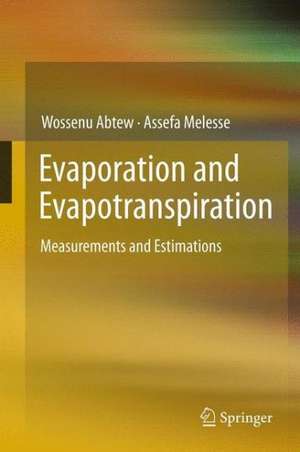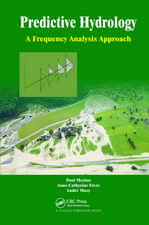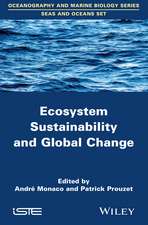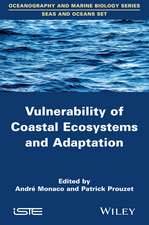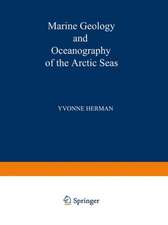Evaporation and Evapotranspiration: Measurements and Estimations
Autor Wossenu Abtew, Assefa Melesseen Limba Engleză Paperback – 21 sep 2014
| Toate formatele și edițiile | Preț | Express |
|---|---|---|
| Paperback (1) | 636.94 lei 6-8 săpt. | |
| SPRINGER NETHERLANDS – 21 sep 2014 | 636.94 lei 6-8 săpt. | |
| Hardback (1) | 645.47 lei 6-8 săpt. | |
| SPRINGER NETHERLANDS – 28 aug 2012 | 645.47 lei 6-8 săpt. |
Preț: 636.94 lei
Preț vechi: 749.34 lei
-15% Nou
Puncte Express: 955
Preț estimativ în valută:
121.89€ • 126.49$ • 101.88£
121.89€ • 126.49$ • 101.88£
Carte tipărită la comandă
Livrare economică 15-29 martie
Preluare comenzi: 021 569.72.76
Specificații
ISBN-13: 9789401781206
ISBN-10: 9401781206
Pagini: 224
Ilustrații: XVIII, 206 p.
Dimensiuni: 155 x 235 x 12 mm
Greutate: 0.32 kg
Ediția:2013
Editura: SPRINGER NETHERLANDS
Colecția Springer
Locul publicării:Dordrecht, Netherlands
ISBN-10: 9401781206
Pagini: 224
Ilustrații: XVIII, 206 p.
Dimensiuni: 155 x 235 x 12 mm
Greutate: 0.32 kg
Ediția:2013
Editura: SPRINGER NETHERLANDS
Colecția Springer
Locul publicării:Dordrecht, Netherlands
Public țintă
ResearchCuprins
Meteorological Parameter Monitoring and Data Quality.- Evaporation and Evapotranspiration Measurement.- Energy Requirements of Dew Evaporation.- Vapor Pressure Calculation Methods.- Evaporation and Evapotranspiration Estimation Methods.- Wetland Evapotranspiration.- Lake Evaporation.- Reference and Crop Evapotranspiration.- Spatially Distributed Surface Energy Flux Modeling.- Crop Yield Estimation Using Remote Sensing and Surface Energy Flux Model.- Wetland Restoration Assessment using Remote Sensing and Surface Energy Budget Based Evapotranspiration.- Climate Change and Evapotranspiration.
Notă biografică
Dr. Wossenu Abtew is a professional civil engineer working in water resources for over 25 years. He is also an agricultural engineer and a hydrologist. He graduated in interdisciplinary engineering focusing in Civil Engineering and Agricultural Engineering in Texas Tech University in 1989. He earned his MSc in Agricultural Engineering from Texas Tech University in 1986. Dr. Abtew designed three types of lysimeter systems and performed evaporation and evapotranspiration measurements from open water, wetlands and receding water tables. He has developed and published an evapotranspiration model (Abtew equation, Simple Abtew Equation) that is being applied in South Florida and several countries. He collaborated on evapotranspiration estimation software development “Program ET_SF”. Dr. Abtew is a Principal Engineer at the South Florida Water Management District. He has over 20 years of experience in the field of water resources at the South Florida Water Management District. He is a certified Diplomate, Water Resources Engineer (D.WRE) by the American Academy of Water Resources Engineers. He has published a proceedings book chapter, 48 published peer-reviewed articles and conference proceedings, over 60 conference presentations, manuals and technical reports.
Dr. Assefa M. Melesse is a water resources engineer with a background in remote sensing and geospatial applications to hydrologic modeling. He earned his ME and PhD from the University of Florida in Agricultural Engineering with Hydrological Sciences and GIS concentrations and 3 minors (Civil Engineering, Environmental Engineering and remote sensing). His areas of research and experience include spatially distributed hydrologic modeling, ecohydrology, spatial surface water balance modeling, surface and groundwater interactions modeling, spatial evapotranspiration mapping using remote sensing, water-energy-carbon fluxes coupling and modeling, remote sensing hydrology, and land cover changedetection and scaling. He is also working on the application of artificial neural network and other statistical learning techniques to hydrology. Dr. Melesse has ample experience in river basin runoff modeling employing GIS and data from remote sensing and has conducted studies in the Nile basin with over 20 publications (peer-reviewed and proceedings). Dr. Melesse is a Professional Engineer (PE) as well as Diplomate, Water Resources Engineer (D.WRE) with many years of teaching, research and extension experience both in Ethiopia and USA. Dr. Melesse is currently an Associate Professor of hydrology at the Department of Earth and Environment, Florida International University.
Dr. Assefa M. Melesse is a water resources engineer with a background in remote sensing and geospatial applications to hydrologic modeling. He earned his ME and PhD from the University of Florida in Agricultural Engineering with Hydrological Sciences and GIS concentrations and 3 minors (Civil Engineering, Environmental Engineering and remote sensing). His areas of research and experience include spatially distributed hydrologic modeling, ecohydrology, spatial surface water balance modeling, surface and groundwater interactions modeling, spatial evapotranspiration mapping using remote sensing, water-energy-carbon fluxes coupling and modeling, remote sensing hydrology, and land cover changedetection and scaling. He is also working on the application of artificial neural network and other statistical learning techniques to hydrology. Dr. Melesse has ample experience in river basin runoff modeling employing GIS and data from remote sensing and has conducted studies in the Nile basin with over 20 publications (peer-reviewed and proceedings). Dr. Melesse is a Professional Engineer (PE) as well as Diplomate, Water Resources Engineer (D.WRE) with many years of teaching, research and extension experience both in Ethiopia and USA. Dr. Melesse is currently an Associate Professor of hydrology at the Department of Earth and Environment, Florida International University.
Textul de pe ultima copertă
The book is a thorough presentation of theoretical and applied aspects of the evaporation and evapotranspiration process supported by data from experimental studies. It is written in a way that the theoretical background of evaporation and evapotranspiration estimation is presented in a simplified manner, comprehensive to most technical readers. Part of the book deals with details of meteorological parameters and monitoring sensors which are needed for estimating evaporation and evapotranspiration. Errors in meteorological parameter measurements are also presented. Estimation errors, strengths, weaknesses and applicability of a wide range of evaporation and evapotranspiration estimation methods are presented along with samples of application to a certain region. The book presents applications of newer, simpler methods, and a new technology: remote sensing application to evaporation and evapotranspiration estimation. The latest interest in the subject, climate change and evapotranspiration is discussed in the last chapter. This book will be beneficial to students, hydrologists, engineers, meteorologists, water managers and others.
Caracteristici
The subject is presented in simplified theory The book is based on experimental work and practical applications It can be used as a supplemental text book for students It works as a handy reference for hydrologists, water managers, professors and climatologists Lysimeter designs can be used by experimenters
